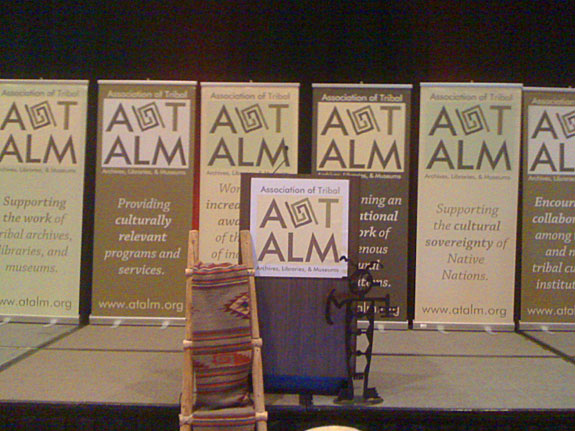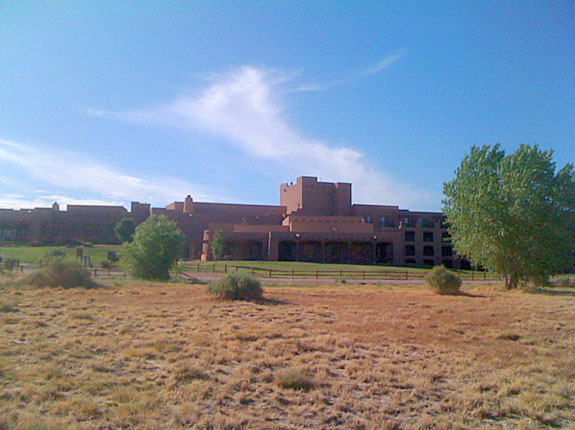Report of the International Conference of Indigenous Archives, Libraries, and Museums - June 10-13, 2013 Hyatt Regency Tamaya Spa and Resort Santa Ana Pueblo, New Mexico

It was an honor to be invited by the Association of Tribal Archives, Libraries, and Museums (ATALM) at its annual conference that was held at the Tamaya Resort in Santa Ana Pueblo, New Mexico as part of the guest speaker list. This was the first time that Island Culture Archival Support (ICAS) was invited to such a prestigious gathering. I was impressed and inspired when I learned that ATALM embodies the same fundamental principle that I believe Pacific Islanders should aspire to- indigenous peoples are and must be the inventors of their own culturally appropriate solutions to address the challenges of the 21st century. The Honorary Chair and guest speaker, LaDonna Harris, who is the Founder and President of the Americans for Indian Opportunity, stressed the importance of this principle during the Opening Ceremony.
The conference attracted over 500 people who work in a cultural heritage organization that possess indigenous records. Attendees came as far away as Alaska and Australia. They came to recognize the need and value of a professional approach to cultural preservation. Indeed, many of the concurrent sessions dealt with digital, analog, and document preservation of cultural records. Overall, however, the conference provided practical information and knowledge that will be useful to the institutions that the attendees represent.
One of the reasons why I wanted to attend the conference was because I felt that the issues confronting many of the cultural heritage organizations that deal with Native American records are very similar to the issues in the Pacific Islands. These issues include a lack of resources, funding and identity. Thus, I chose to attend breakout sessions that I can, perhaps, utilize any new information for my projects in the Pacific. I concentrated on preservation, digitization, and fundraising sessions such as Keeping Content Alive: Best Practices for Digital Preservation of Audio and Video Recordings, Six Ps of Fundraising, and Are you Ready? Safeguarding Cultural Collections.
On the morning of the last day of the conference I participated in the Round-Table session where I chaired a table to discuss the topic of handling Traditional Cultural Expression material. ATALM gave me a new title from the paper that I submitted at the UNESCO Memory of the World conference: Strategies and Guidelines for Accessing Traditional Cultural Expression Materials: The Pacific Islands Model. Although it was a small group at my table, we had a very lively discussion that lasted an hour. We were all in accord that the handling of Traditional Cultural Expression material in the Digital Age is going to affect many cultural heritage organizations if it has not already.
Finally, ATALM's mission is to ensure that Indian nations are keepers and presenters of their own histories, and that cultural histories and ways of knowing are preserved and made accessible. Definitely, this mission can be applied to cultural heritage organizations in the Pacific Islands. However, it truly takes a collaborative effort to achieve this mission. And that is why meetings such as this are so important. It gives the opportunity for cultural heritage organizations to work together through many of the issues with the goal of strengthening safeguarding practices to preserve the heritage of indigenous peoples.
The next ATALM Conference is slated for June 2014 in Palm Springs, California.
